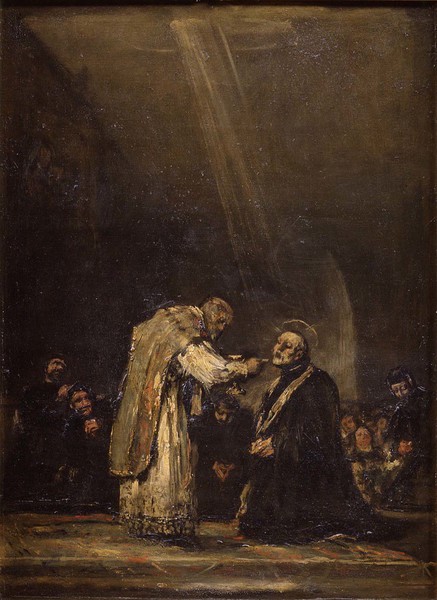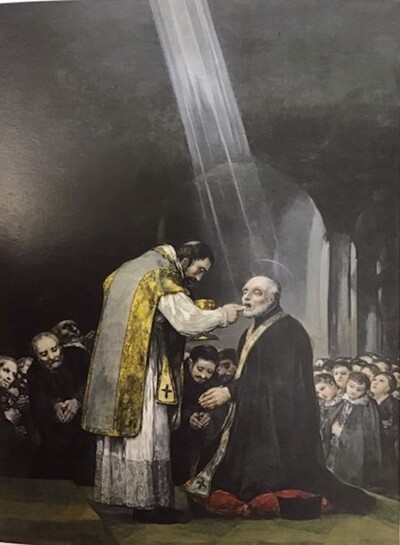- Cronología
- 1819
- Ubicación
- Musée Bonnat - Helleu, Bayonne, France
- Dimensiones
- 45.3 x 33.5 cm
- Técnica y soporte
- Oil on wood panel
- Reconocimiento de la autoría de Goya
- Documented work
- Titular
- Musée Bonnat de Bayonne
- Ficha: realización/revisión
- 02 Feb 2010 / 13 Jun 2023
- Inventario
- (11)
This sketch appears in an inventory written by Brugada in 1828 which records the belongings left in the Quinta del Sordo. Viñaza affirms that Father Tomás López saw it in Javier Goya's house. Later information on this work is provided a photograph of the work taken by the German Braun when he saw it in the collection of Paul Saint-Victor. Some time later, it was entrusted to the Bonnat Museum in Bayonne.
The sketch for the painting Goya produced for the Scolopi fathers, an exemplary work in terms of its emotional and spiritual force, is noteworthy for the impasto technique which gives a relief texture, above all to the principal figures in the scene. This does not seem to be the final design for the work, given the rough sketchiness of the features. Goya has concentrated in the application of colour and the study of light in this dark church where the figures are found. While in the definitive work the divine light which falls on the saint is well defined, here it reaches the upper section of the church, creating a warmer atmosphere.
Goya has not given much importance to the figures in the background, and this is the main difference between this sketch and the definitive work. The sparse architecture elements in the final canvas are further reduced in this study, with just a vague indication of one part of the church.
While the work Goya painted for the Pious Schools is outstanding, this sketch is still surprising for its texture and painterly qualities, and the face of Saint Joseph of Calasanz is striking for its enraptured gaze and fervour.
-
L'œuvre peint de Goya. 4 volsParís1928-1950p. 145, cat. 102
-
Vie et ouvre de Francisco de GoyaParísOffice du livre1970pp. 329, 378, cat. 1.639
-
BarcelonaPolígrafa1970vol. I, p. 376, cat. 693
-
L’opera pittorica completa di GoyaMilanRizzoli1974p. 202, cat. 598
-
Francisco de Goya, 4 vols.ZaragozaCaja de Ahorros de Zaragoza, Aragón y Rioja1980-1982vol. IV, p. 110 y p. 312 (il.)

